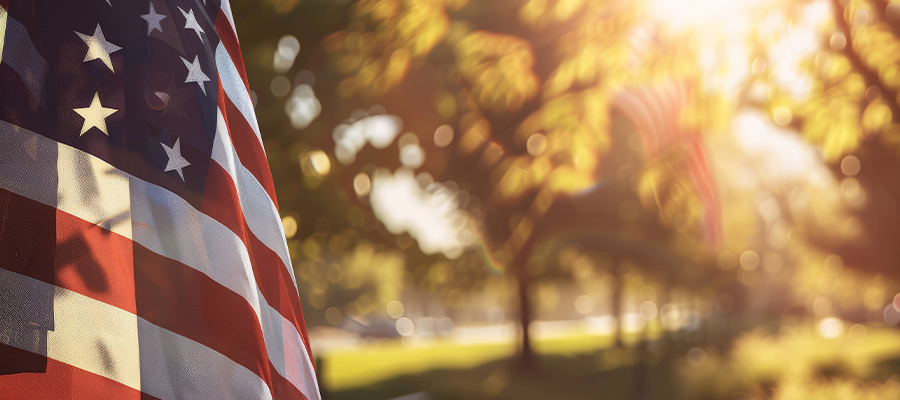- Vegetation Management Services
- In Your Neighborhood
- About
- Careers
- Webinars
- Articles
Achieving Diversity in Utility Vegetation Management

Achieving Diversity in Utility Vegetation Management
By Carly Harrower, senior operations manager, ACRT Pacific
Achieving greater diversity levels in the workforce has been a goal for many industries for years, but in utility vegetation management (UVM), it’s proving to be a challenging one. There are a few critical reasons for this, but the two most significant are: (1) the types of roles required in different areas of the industry and (2) a lack of awareness of the industry itself.
When it comes to roles, we must break down the areas where people in our industry work. There are the utilities themselves — UVM companies such as ACRT and ACRT Pacific — and tree care contractors t execute vegetation management (VM) work plans. Utilities have improved diversity-related metrics thanks to environmental, social, and governance (ESG) requirements developed by investors. Private tree care companies have also attracted a diverse workforce because the profession typically does not require a background in formal education to obtain a position, enabling people to get to work faster.
These two segments of the industry leave UVM companies stuck in the middle with a few distinct challenges. First, the nature of our work requires thorough education, both upfront through training and through continuing education. Second, despite our ongoing efforts, very few people know that this industry is available to them. And because there is an awareness issue, attracting and retaining the best talent is extremely competitive.
The Generational and Geographical Problems
Further complicating the matter is the fact that a new generation is entering the workforce, Generation Z, those born after 1996. According to Deloitte, Generation Z already constitutes more than a quarter of the population, and as of 2020, it has become the most diverse generation in U.S. history. With the oldest Gen Zers around one year out of a four-year degree program, it has never been more essential to understand what this generation expects in the workplace and do what we can to communicate the importance of our industry in maintaining reliable energy and public safety. The Pew Research Center notes, those who fall under the Gen Z category are “less likely to drop out of high school and more likely to be enrolled in college. Among 18- to 21-year-olds no longer in high school in 2018, 57% were enrolled in a two-year or four-year college.” A Landscape Business article by ACRT Pacific President Brian Joiner details the impact of geography in recruiting is another hurdle in UVM, as much of the talent in the industry — particularly those in Generation Y (Millennials) — are moving away from coastal areas in favor of western and southern cities where taxes, the cost of living, and housing costs are less expensive. States like New York, California, Florida, the Carolinas, and others experience more weather- and fire-related emergencies, and it’s in these areas that the need for skilled workers is greatest. And yet, while diverse talent is moving inland, much of it remains in urban areas.
Efforts Made Now Are an Investment in Our Future
Outreach and education are not new concepts in the collective UVM recruiting toolkit, but now is the time to use them in a more focused and strategic manner. Remember, our goal is not only to attract additional talent to our industry but also to attract more diverse talent. A more diverse company is a more successful company. We can begin by conducting these efforts in urban areas where more diverse talent is already available and where the need for their skills and knowledge is greatest.
While your organization may already be conducting outreach and education in your local area, consider leveraging your connections — academic and professional — to start participating in new programs in coastal and urban communities. Talent acquisition and recruitment teams should consider conducting heavy research into vocational and community programs — sponsoring, attending, and speaking at them as often as possible.
Consider leveraging digital platforms to share informative content showcasing existing diversity within your organization that shares those employees’ stories and experiences, while providing opportunities to learn more about available careers and benefit offerings. Whether you create your content as a video, a written piece, or some other format, use them in an organic fashion (such as on a company YouTube page or website) and in paid channels (such as promoting them via advertising on LinkedIn, Instagram, and other social media platforms). The latter will allow you to conduct greater targeting to reach specific geographies and demographics, thereby reaching a diverse talent base.
Now is also the time to dig deeper into academic outreach opportunities. College-level outreach is a common recruitment strategy in the UVM industry. Still, we have a distinct opportunity to start speaking to students sooner, such as during their final years in high school. Attending college fairs and other related educational events specific to high school students allows us to increase awareness of our industry and better serve the inbound college students who may be interested in urban forestry, arboriculture, botany, wildlife science, and other related fields of study.
By connecting with students before they enter college, we’re empowering them to choose schools that excel in these disciplines to help them navigate their college career more seamlessly, rather than exploring majors for a few years only to switch to a UVM-related field and having to cram courses before graduating. This also gives students in college more time to explore industry-related programs, such as internships, and perhaps even gain relevant summer employment opportunities with municipalities.
Remember: Diversity Isn’t an Accident
We must be intentional about our efforts to attract more diverse talent and increase awareness of our industry. The future of our industry relies on people. With one of the most diverse generations entering the workforce, we have an amazing opportunity to attract a broader group of people with new perspectives, skill sets, and experiences. These individuals are looking for careers where they’ll be able to not only make a difference but also enjoy a better work-life balance and overall quality of life. We can also speak to this generation’s passion for social and environmental responsibility by highlighting our passion for our work environment and our focus on people — the foundation of our industry and our greatest asset.
I hope your organization will give careful consideration to how diverse talent is spoken to, recruited, and retained this year. This is an effort that requires participation industry-wide to succeed, so I also encourage conversations between members of the industry, internally within your organizations, and within your professional groups.
The future of our industry — and in turn, the utilities and property owners we serve — relies on us. Let’s not let them down.
Related Articles

By C. Troy Ross, President, ACRT and ACRT Pacific On a chilly Monday morning, a utility vegetation management crew gathers for their weekly briefing. Instead of launching into instructions, their supervisor begins by asking each team member how they’re doing. One mentions a child’s illness, another shares excitement about a certification course they just completed,[...]
Read More
Every year on Veterans Day, we pause to honor the men and women who have worn our nation’s uniform. They come from every background and every corner of the country, united by a common purpose: to serve something greater than themselves. Their service enriches our organization, and we are grateful for the impact they continue[...]
Read More
As we celebrate Employee Ownership Month this October, we are proud to highlight colleagues who have served on the ACRT Services Board of Directors. At ACRT Services, our independence as a 100% employee-owned company empowers every employee-owner to share in our success and play a role in shaping our future. This commitment reflects our mission:[...]
Read More
As we celebrate Employee Ownership Month this October, we are proud to highlight colleagues who have served on the ACRT Services Board of Directors. At ACRT Services, our independence as a 100% employee-owned company empowers every employee-owner to share in our success and play a role in shaping our future. This commitment reflects our mission:[...]
Read MoreRecent Posts
- Servant Leadership in Utility Vegetation Management 12th Nov 2025
- ACRT Pacific Honors Our Veterans 10th Nov 2025
- Rian Owens Receives Safety Challenge Coin 05th Nov 2025